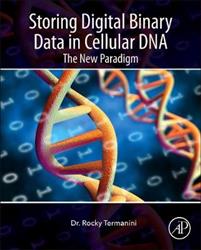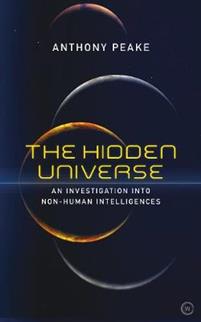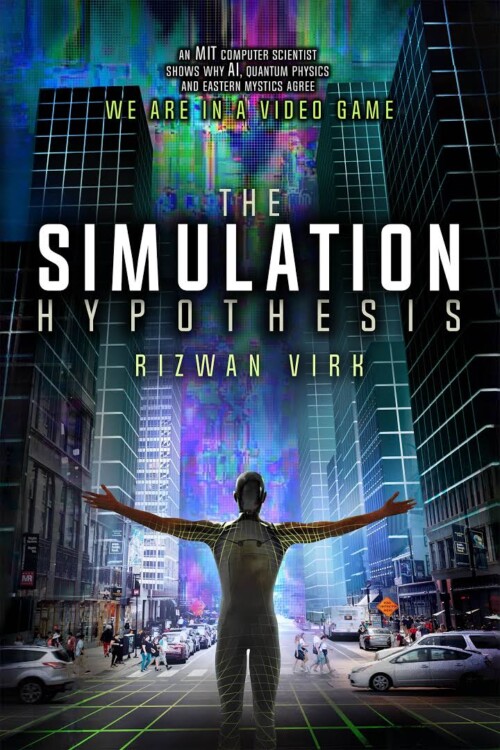“In a series of exciting developments, it has recently been discovered that DNA works in a similar way to the kind of storage we use in modern computers. This insight has been utilized in recent years with a number of fascinating projects. For example, in 2012, George Church and a small team of researchers working at the Wyss Institute at Harvard University encoded a 53,400-word book, 11 jpg images and a JavaScript program – amounting to 5.27 million bits of data in total – into sequences of DNA.
The DNA molecule is built from organic molecules known as “nucleotides”. In theory, DNA can encode two bits of data per nucleotide. These are the basic building blocks from which DNA is created. That makes 455 exabytes – roughly the capacity of 100 billion DVDs – per gram of single-stranded DNA, making it five or six orders denser than currently available digital media, such as flash memory. Information stored in DNA can also be read thousands of years after it was first laid down.
This is exactly analogous to data storage on a computer hard drive. In this project, the DNA bases A or C were encoded with a zero and the G and T bases were encoded as a 1. In this way standard binary notation was reproduced.
Since then things have really moved on apace. For example, in 2017 researchers at Harvard Medical School published an article in the journal Nature describing how they were able to record complex information such as an image or a movie into bacterial genomes using DNA editing technology called CRISPRs.
CRISPR is an acronym for “clustered regularly interspaced short palindromic repeats”. It is actually a family of DNA sequences found within bacteria. It was discovered as an immune system of bacteria to fight against invading DNA pathogens, such as viruses. Of particular interest to the researchers was that bacteria use the CRISPR/Cas9 system to record in their DNA information about viruses they encounter.
They are, in effect, writing a manual on how to protect themselves against harmful viruses for use by future generations. This is exactly what we do when we create libraries and, in more recent years, record information on computer hard drives and in other digitally readable media.
DNA is the “hard drive” in every cell of the body. The four molecules are like a sequence of data. DNA is a digital storage medium. If we can manipulate the sequence, we can also store information.
A finger of DNA (equivalent in size to a test tube) can hold approximately 1 petabyte (PB) of data, the equivalent of 1.5 million CD Rom discs. For comparison, it has been suggested that the human brain can store about 2.5 petabytes of memory data. Put another way, a PB is just over one quadrillion bytes (1,125,899,906,842,624). This means that all the present digital information in the whole world, encoded in DNA, would easily fit in the back of one SUV or estate car.
So how much “information” do you contain? Well, every cell of your body contains about a billion DNA bases arranged in a particular four-letter code. So to calculate the number of possible combinations you have to raise 4 to the power of one billion. This results in 2 billion bits contained in an area a trillionth of the volume of a matchhead.
On 22 February 2019 a paper was published in the academic journal Science, describing an astounding breakthrough about the information storage of DNA. The paper announced that a group of scientists had managed to create an additional four DNA bases and, in doing so, had increased the DNA alphabet available for data storage from four to eight. This new system has been called Hachimoji DNA. Hachi is Japanese for “eight”, moji for “letter”.
These additional letters fit perfectly into DNA’s double helix, and enzymes read them in the same way they read the original four. Although the four natural bases should give a large number of sequences of letters, they are actually restricted. C can only bond to G, and A can only bond to T. These strict rules help ensure that DNA strands do not clump together into a jumble.
This development effectively doubles the data storage capacity of DNA. But it has other implications too. It suggests that other forms of DNA could exist with many more bases. If they did so, what kind of life could they create?
It is important to appreciate what these discoveries mean. In effect, DNA is an information storage device, in the same way that a computer hard drive is. The amount of digital information that can be stored is vast. But there is more.
Please recall Michael Harner’s ayahuasca experience discussed in the last chapter. You will remember that in his “trip” Harner encountered reptilian entities who informed him that they had created life on planet Earth and now hid themselves deep within the cellular structure of all living creatures, including humankind.
Now, what substance can be found deep within the human body that has a distinct reptilian (specifically snake-like) appearance? Yes, DNA. Indeed, this similarity has been noted by, among others, Jeremy Narby. So what does all this mean in relation to my Egregorial model?
We are now ready to draw this material all together.”
Kilder:
https://www.adlibris.com/no/bok/the-hidden-universe-9781786782809
https://www.adlibris.com/no/bok/storing-digital-binary-data-in-cellular-dna-9780323852227
https://www.ncbi.nlm.nih.gov/pmc/articles/PMC5842791/
https://pubmed.ncbi.nlm.nih.gov/30792304/
I 2034 så vil de store korporasjonene eie vårt DNA og kansje også kroppene våre https://www.fastcompany.com/90319565/privacy-in-2034-a-corporation-owns-your-dna-and-maybe-your-body




